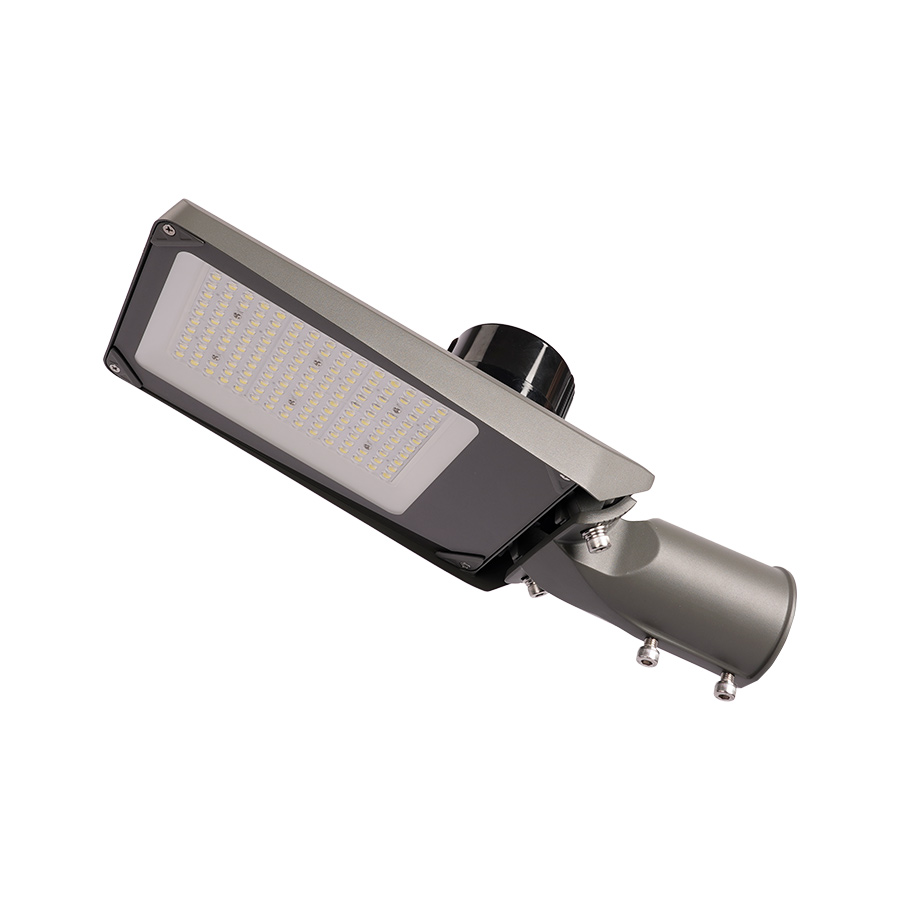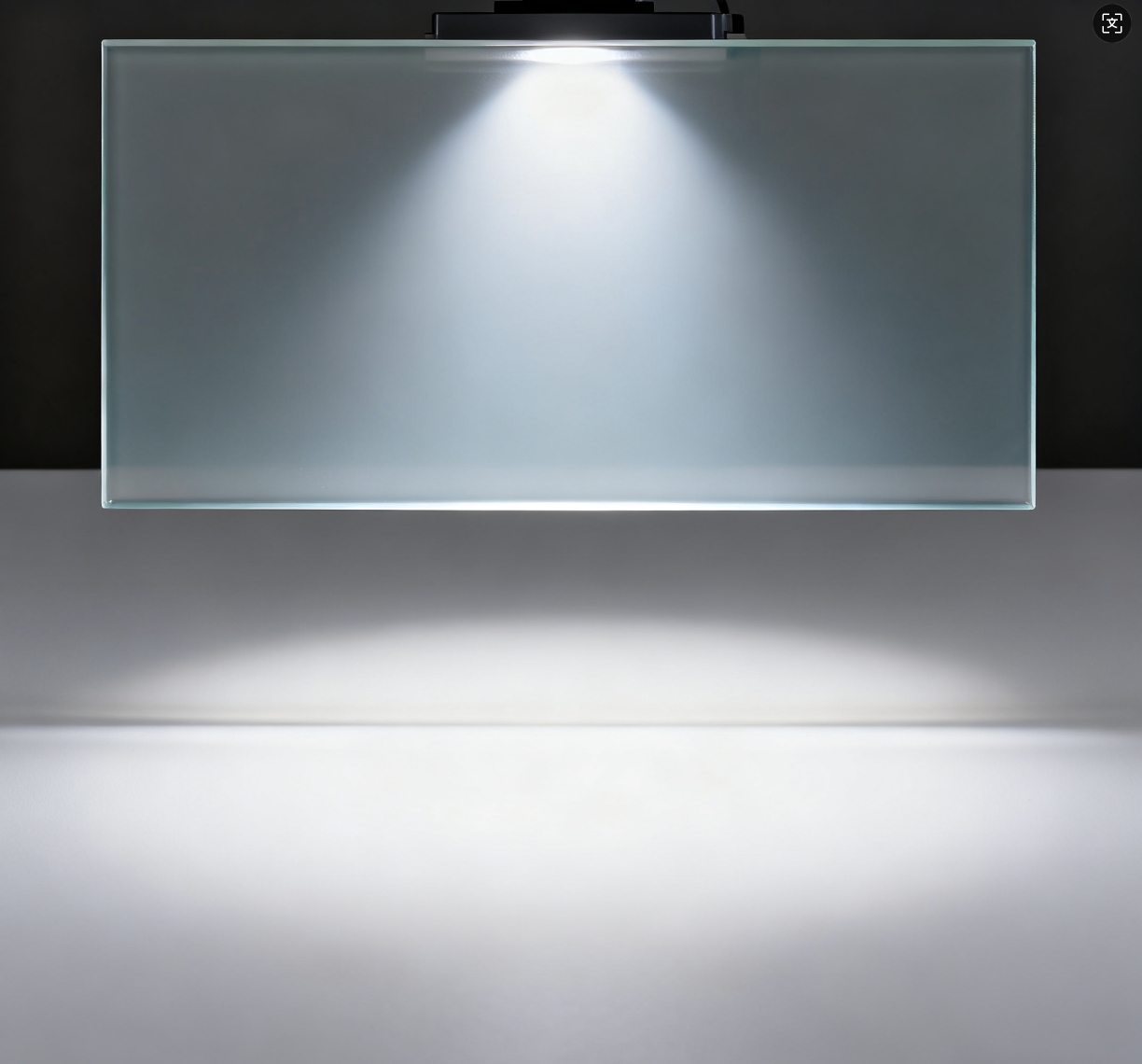The "light" dilemma of traditional street lamps
For a long time in the past, high-pressure sodium lamps were the main force in street lighting. However, over time, its many drawbacks gradually became apparent. High pressure sodium lamps have high energy consumption and consume a large amount of electricity, which not only increases the cost of electricity but also does not conform to the current trend of energy conservation and environmental protection. Moreover, its luminous efficiency is relatively low, producing only 60-100 lumens of light per watt, which greatly reduces the lighting efficiency. One major drawback is the color rendering index, which is usually only between 20-40. This leads to severe color distortion of objects under the illumination of high-pressure sodium lamps, making it difficult for pedestrians to accurately distinguish the true colors of the surrounding environment. Whether shopping or taking a walk, the visual experience is poor. When driving at night, a low color rendering index can also easily cause drivers to make mistakes in judging road conditions, thereby laying safety hazards. In some old streets of cities, high-pressure sodium lamps are used for lighting. At night, the entire street is shrouded in a dim yellow light, which not only lacks vitality but also makes people feel depressed. The emergence of LED street lights has brought new hope to solve these problems and opened a new chapter for urban lighting.
The "light" advantage of LED street lights
(1) Energy saving and Efficient: The Magic of Light in Electricity Conversion
LED street lights are like a magical wizard, capable of efficiently converting electrical energy into light energy. Its energy conversion rate is as high as 80% -90%, compared to traditional high-pressure sodium lamps which have an energy conversion rate of only 30% -40%. Taking common 100W LED street lights and 250W high-pressure sodium lamps as examples, the brightness of 100W LED street lights is comparable to that of 250W high-pressure sodium lamps, but the power consumption is significantly reduced. Assuming that the lights are on for 10 hours a day at a rate of 1 yuan per kilowatt hour, the annual electricity cost for a 250W high-pressure sodium lamp is about 912.5 yuan, while the annual electricity cost for a 100W LED street lamp is only 365 yuan. Over the course of a year, a single LED street lamp can save 547.5 yuan in electricity costs. If a city were to replace LED street lights on a large scale, the saved electricity costs would be a significant amount, which could save the city a lot of electricity resources.
(2) Longevity: The Promise of "Light" for Persistent Illumination
The lifespan of LED street lights is excellent, typically reaching 30000-50000 hours, or about 7-12 years, which is beyond the reach of traditional street lights. The lifespan of traditional high-pressure sodium lamps is generally only 1-2 years. Frequent replacement not only consumes manpower and material resources, but also brings many inconveniences to road maintenance, affecting normal traffic flow. LED street lights, due to their low light attenuation, have a light attenuation of less than 3% in one year, and can still meet the illumination requirements for road use after 10 years of use. This means that using LED street lights can greatly reduce the frequency of lamp replacement and lower maintenance costs. For example, on some newly built urban roads, after installing LED street lights, there is no need for large-scale replacement of lamps for many years, and the lighting effect is always stable and reliable, providing lasting guarantee for urban lighting.
(3) High quality lighting: a truly restored "light" experience
The high color rendering index of LED street lights gives them a unique advantage in lighting, with a color rendering index (CRI) typically ≥ 70, which can more accurately reproduce the color of objects. Under the illumination of LED street lights, the streets at night seem to be given new vitality. Vehicles, pedestrians, buildings, etc. on the road can all present their original colors. Pedestrians can clearly distinguish the surrounding environment, and drivers can more accurately identify road signs, obstacles, etc., greatly improving the visual effect and safety of nighttime travel. For example, in a commercial pedestrian street, LED street lights can make the colors of the products in the storefront bright and eye-catching, attracting customers' attention; In residential areas, it can create a warm and comfortable living environment, allowing residents to feel the warmth of home even at night.
Selecting key optical indicators for LED street lights
(1) Luminous flux: a measure of brightness in terms of "light"
Luminous flux is an important indicator for measuring the luminous ability of a light source. It refers to the radiation power that the human eye can perceive, which is equal to the product of the radiation energy of a certain wavelength band per unit time and the relative visual acuity of that wavelength band, measured in lumens (lm). Simply put, luminous flux is like the "total amount of light" emitted by a light source. The greater the luminous flux, the brighter the street lamp to some extent. On urban main roads, due to high traffic volume and fast speeds, high lighting brightness is required to ensure clear visibility for drivers. LED street lights with a luminous flux of 10000-20000lm are usually chosen; In some secondary roads or branches with low traffic flow, LED street lights with a luminous flux of 3000-8000lm can meet the lighting needs. If the luminous flux is chosen too low, the road will appear dim and affect travel safety; If the choice is too high, it will not only cause energy waste, but may also produce glare, which is also detrimental to traffic safety.
(2) Color rendering index: the "light" standard for color reproduction
The Color Rendering Index (CRI) is used to measure the authenticity of an object's color when illuminated by a light source. The value ranges from 0 to 100, with a higher value indicating better color reproducibility. High color rendering index is crucial in road lighting. For example, at a color temperature of 5000K, LED street lights with a color rendering index ≥ 70 can enable drivers to more accurately recognize traffic signs, markings, and the colors of vehicles and pedestrians on the road, thereby making more timely and accurate judgments. If the color rendering index is low, such as below 50, under such lighting conditions, red traffic signals may appear dark red, and green signs may also distort color, which can easily lead to driver misjudgment and cause traffic accidents. Therefore, in order to ensure the visual effect and traffic safety of nighttime travel, LED street lights with a color rendering index of ≥ 70 should be selected as much as possible for road lighting.
(3) Color temperature: the temperature of the "light" that creates an atmosphere
Color temperature is a scale that represents the color of a light source, measured in Kelvin (K). Low color temperature light tends to be yellowish, giving people a warm and cozy feeling; High color temperature light tends to be blue and white, appearing bright and cool. In road lighting, different color temperatures have different applicable scenarios. Generally speaking, a color temperature of 3000-5000K is more suitable for road lighting. The warm yellow light around 3000K has strong penetration in rainy and foggy weather, allowing drivers to see road conditions more clearly and reducing the risk of accidents caused by obstructed vision. Therefore, in some foggy, rainy areas or rural roads with relatively poor lighting conditions, LED street lights with a color temperature of 3000K are often used; Neutral white light at 4000-5000K has better comprehensive performance and can provide reliable lighting in various weather conditions. The visual experience is also relatively comfortable, and it is widely used in urban roads. If the color temperature is too high, such as 6000K or above, although it looks bright, its penetration is poor in rainy and foggy weather, and the light is easily reflected by water vapor, causing blurred vision and potentially dazzling oncoming drivers, affecting traffic safety.
(4) Lamp efficiency: the "light" efficiency of electricity utilization
Lamp efficiency refers to the ratio of the luminous flux emitted by the lamp to the total luminous flux emitted by the light source, which reflects the efficiency of the lamp in converting electrical energy into light energy. The higher the efficiency of the lighting fixture, the more light it can emit while consuming the same amount of electricity, resulting in better energy-saving effects. For example, an LED street light with an efficiency of 80% can convert more electrical energy into effective light energy for road lighting at the same power, compared to a street light with an efficiency of 60%. According to relevant standards, the efficiency of conventional street lamps used in road lighting should be higher than 75%. When choosing LED street lamps, products with high lamp efficiency should be selected as much as possible. This not only reduces energy consumption and operating costs, but also conforms to the development concept of energy conservation and environmental protection, contributing to sustainable development.
Key points of optical design for LED street lights
(1) Light distribution design: precise control of the distribution of light
Light distribution design is a key link in the optical design of LED street lights. It is like a precise commander responsible for allocating light reasonably and illuminating specific areas according to people's needs. In road lighting, different road types and scenes have different requirements for lighting distribution. The common bat wing shaped light distribution has a light distribution similar to bat wings. This light distribution method can evenly distribute light on the road, effectively reducing the difference in brightness and improving the uniformity of lighting. It is particularly suitable for scenes such as urban roads and highways that require high uniform lighting on the road surface. For example, on urban main roads, using LED street lights with bat wing shaped light distribution can evenly illuminate the entire road surface. During driving, the brightness of the road surface in the driver's field of view is basically the same, and there will be no flickering, greatly improving the safety of night driving.
In addition to bat wing shaped light distribution, there are various types of light distribution such as rectangular light distribution and circular light distribution. The light distribution of rectangular lighting presents a rectangular shape, which can accurately illuminate long roads or tunnels. The light utilization rate is high, and it is widely used in tunnel lighting, ensuring that every corner of the tunnel can receive sufficient and uniform lighting; Circular light distribution is the uniform diffusion of light in all directions, suitable for places that require all-round lighting, such as large turntables, squares, etc. Circular LED street lights can provide illumination without blind spots, making it convenient for pedestrians and vehicles to move around. Designers will comprehensively select the appropriate lighting type based on factors such as the actual width of the road, the installation height of lighting fixtures, and the surrounding environment, in order to achieve the best lighting effect and provide a safe and comfortable lighting environment for pedestrians and vehicles.
(2) Heat dissipation design: "light" guarantee for stable performance
Heat dissipation has a crucial impact on the performance and lifespan of LED street lights. During the operation of LED street lights, while electrical energy is converted into light energy, a portion of the electrical energy is also converted into heat energy. If this heat cannot be dissipated in a timely manner, the temperature of the LED chip will continue to rise. When the temperature of the chip is too high, it will cause a decrease in the luminous efficiency of the LED, resulting in light decay phenomenon, that is, the brightness gradually decreases, seriously affecting the lighting effect. Moreover, high temperatures can accelerate the aging of LED chips and other electronic components, shorten the service life of LED street lights, and increase maintenance costs.
To solve the heat dissipation problem, LED street lights usually use various heat dissipation methods. Common methods include using materials with high thermal conductivity, such as aluminum alloy, to make heat sinks. Aluminum alloy has good thermal conductivity and can quickly dissipate the heat generated by LED chips, like an efficient heat transfer channel. Some LED street lights use large-area fin designs for their heat sinks, which increase the heat dissipation area and allow for more complete contact with the air, accelerating heat dissipation like fans that quickly dissipate heat. Some will also use heat pipe heat dissipation technology, which utilizes the phase change of the internal working fluid to transfer heat and has extremely high thermal conductivity efficiency. It can quickly transfer heat from the high temperature end to the low temperature end, effectively reducing the temperature of LED chips, ensuring the stable operation of LED street lights, extending their service life, and providing a continuous and reliable light source for road lighting.
How to choose high-quality LED street lights
(1) Certification and Brand: The "Light" Logo for Quality Assurance
Certification and brand are important factors that cannot be ignored when selecting LED street lights. Firstly, it is important to pay attention to whether the product has relevant certifications, such as CQC certification, which is an authoritative certification issued by the China Quality Certification Center, indicating that the product meets national standards and relevant technical specifications in terms of quality, safety, and performance. CE certification is a mandatory certification mark in the EU market, which means that the product meets the basic requirements of relevant EU directives. LED street lights that have passed CE certification have certain guarantees in electromagnetic compatibility, electrical safety, and other aspects. RoHS certification mainly targets the restriction of harmful substances in electronic and electrical equipment, ensuring strict control of the use of harmful substances such as lead, mercury, cadmium, etc. in the production process of LED street lights, meeting environmental requirements, and reducing harm to the environment and human health. Choosing LED street lights with these certifications is like adding multiple safeguards to the quality and safety of the product, giving users more peace of mind.
In addition to certification, well-known brand LED street lights are usually more trustworthy. Internationally renowned brands such as Osram and Philips, as well as domestic brands such as Leishi Lighting and Sanxiong Aurora, have been deeply involved in the lighting industry for many years, possessing advanced production technology and strict quality control systems. These brands focus on product research and innovation, constantly investing resources to improve product performance and quality. Their LED street lights often perform well in optical design, heat dissipation treatment, and service life. Moreover, behind the brand lies a good reputation and credibility, which places greater emphasis on after-sales service and provides users with more reliable guarantees.
(2) Actual testing: A 'light' experience where seeing is believing
Actual testing is the most direct way to understand the performance of LED street lights. If conditions permit, it is recommended to conduct on-site observation and choose roads equipped with this type of LED street light to personally experience its lighting effect at night. Observe whether the brightness of the road surface is uniform, whether there are obvious dark areas or bright spots, whether the lighting range can cover the entire road, and whether the lighting for the surrounding environment is appropriate. At the same time, attention should be paid to whether there is glare in the lighting fixtures. Glare can cause discomfort to the human eye, and in severe cases, it can also affect visual judgment and pose a threat to traffic safety. During the observation process, different driving scenarios can be simulated to observe the lighting situation of LED street lights from different angles and comprehensively evaluate their actual lighting effects.
If on-site observation is not possible, the supplier can also be requested to provide a third-party inspection report. The testing report should be conducted in accordance with relevant national or industry standards, such as GB/T 31832-2015 "Technical Requirements for LED Urban Road Lighting Applications", etc. The report should provide detailed test results for key parameters such as luminous flux, color rendering index, color temperature, and lamp efficiency. By testing reports, one can objectively and accurately understand the performance indicators of LED street lights and determine whether they meet their needs. For example, the inspection report shows that the luminous flux of a certain LED street lamp is 15000lm, the color rendering index reaches 80, the color temperature is 4000K, and the lamp efficiency is 85%. These data can help us clearly understand the lighting ability, color reproduction, light color, and energy utilization efficiency of the product.
(3) After sales service: the "light" backing of long-term support
Comprehensive after-sales service is an important guarantee for the long-term stable operation of LED street lights. When choosing LED street lights, it is important to choose merchants who offer a minimum warranty period of 3-5 years. During the warranty period, if there are any quality issues with the lighting fixtures, the merchant shall be responsible for free repair or replacement. At the same time, merchants should also provide timely maintenance response services. When the lighting fixture malfunctions, they can respond within 24 hours and arrange technical personnel for repairs as soon as possible to reduce the impact of lighting fixture failures on road lighting.
In addition to warranty and repair response, businesses should also provide regular maintenance and upkeep services for lighting fixtures. Regular maintenance can promptly identify potential issues with lighting fixtures, such as poor heat dissipation and aging circuits, and address them in advance to extend the lifespan of the fixtures. For example, businesses can arrange professional technicians to conduct a comprehensive inspection of lighting fixtures once a year, including cleaning the surface of the fixtures

















